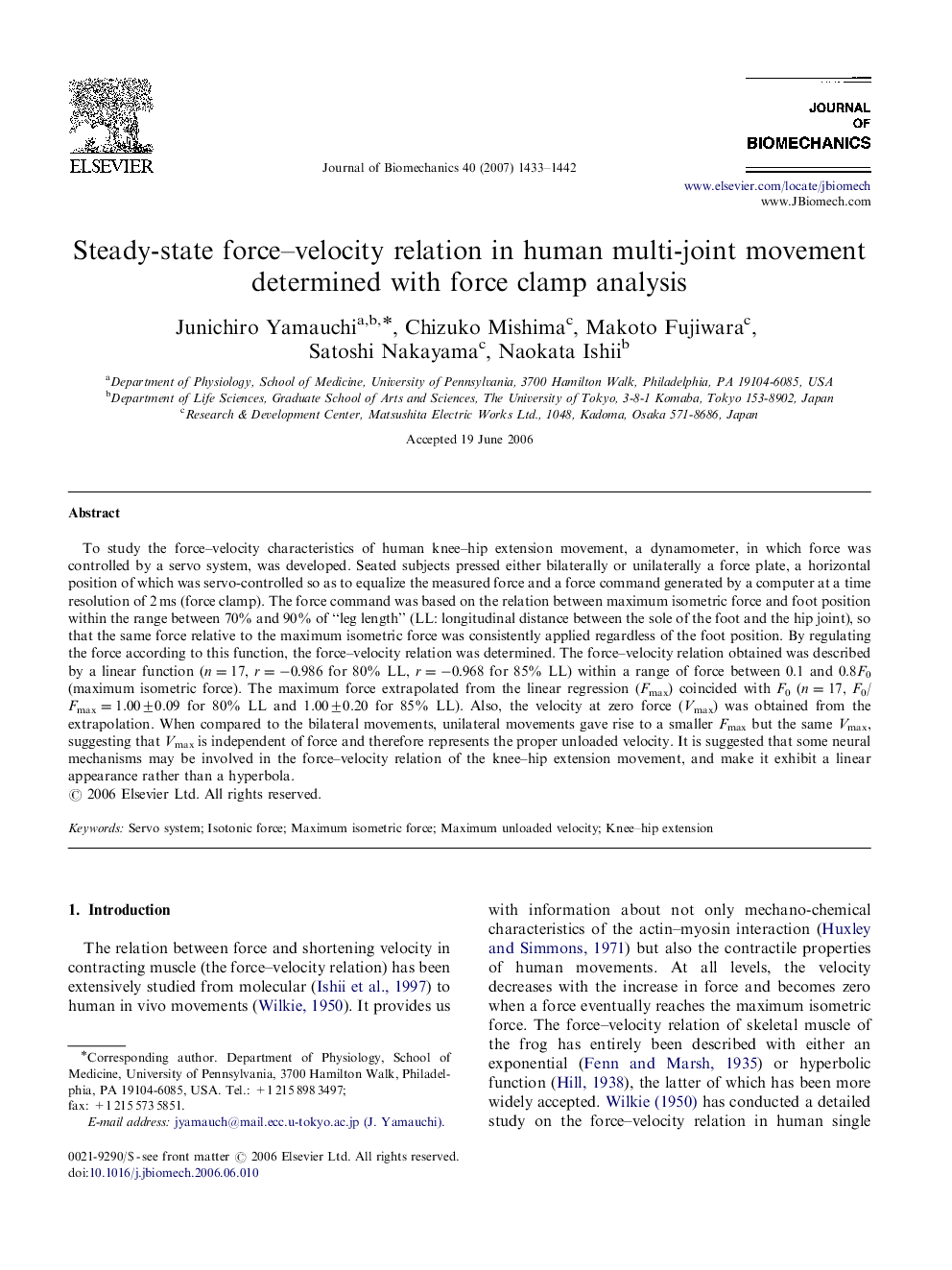| کد مقاله | کد نشریه | سال انتشار | مقاله انگلیسی | نسخه تمام متن |
|---|---|---|---|---|
| 874500 | 910340 | 2007 | 10 صفحه PDF | دانلود رایگان |

To study the force–velocity characteristics of human knee–hip extension movement, a dynamometer, in which force was controlled by a servo system, was developed. Seated subjects pressed either bilaterally or unilaterally a force plate, a horizontal position of which was servo-controlled so as to equalize the measured force and a force command generated by a computer at a time resolution of 2 ms (force clamp). The force command was based on the relation between maximum isometric force and foot position within the range between 70% and 90% of “leg length” (LL: longitudinal distance between the sole of the foot and the hip joint), so that the same force relative to the maximum isometric force was consistently applied regardless of the foot position. By regulating the force according to this function, the force–velocity relation was determined. The force–velocity relation obtained was described by a linear function (n=17n=17, r=-0.986r=-0.986 for 80% LL, r=-0.968r=-0.968 for 85% LL) within a range of force between 0.1 and 0.8F0 (maximum isometric force). The maximum force extrapolated from the linear regression (Fmax) coincided with F0 (n=17n=17, F0/Fmax=1.00±0.09 for 80% LL and 1.00±0.20 for 85% LL). Also, the velocity at zero force (Vmax) was obtained from the extrapolation. When compared to the bilateral movements, unilateral movements gave rise to a smaller Fmax but the same Vmax, suggesting that Vmax is independent of force and therefore represents the proper unloaded velocity. It is suggested that some neural mechanisms may be involved in the force–velocity relation of the knee–hip extension movement, and make it exhibit a linear appearance rather than a hyperbola.
Journal: Journal of Biomechanics - Volume 40, Issue 7, 2007, Pages 1433–1442